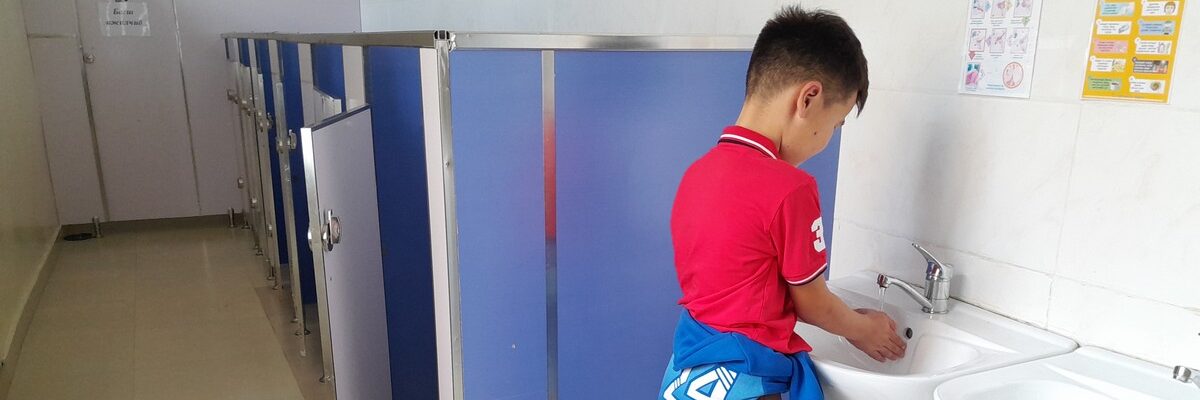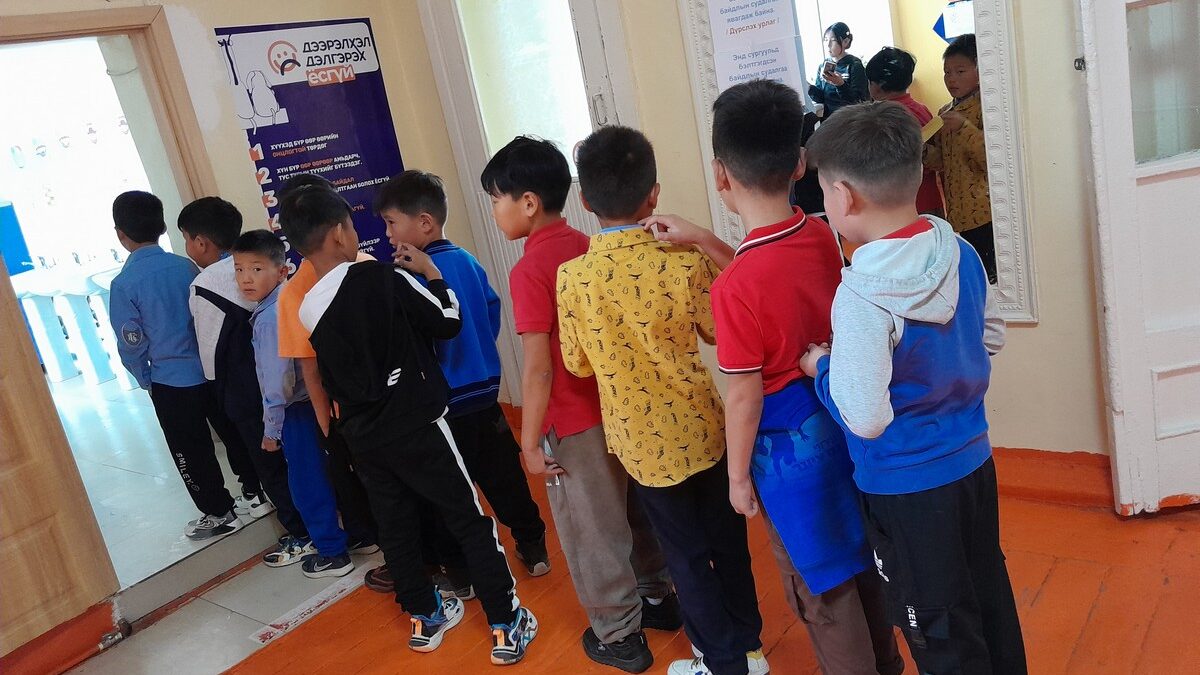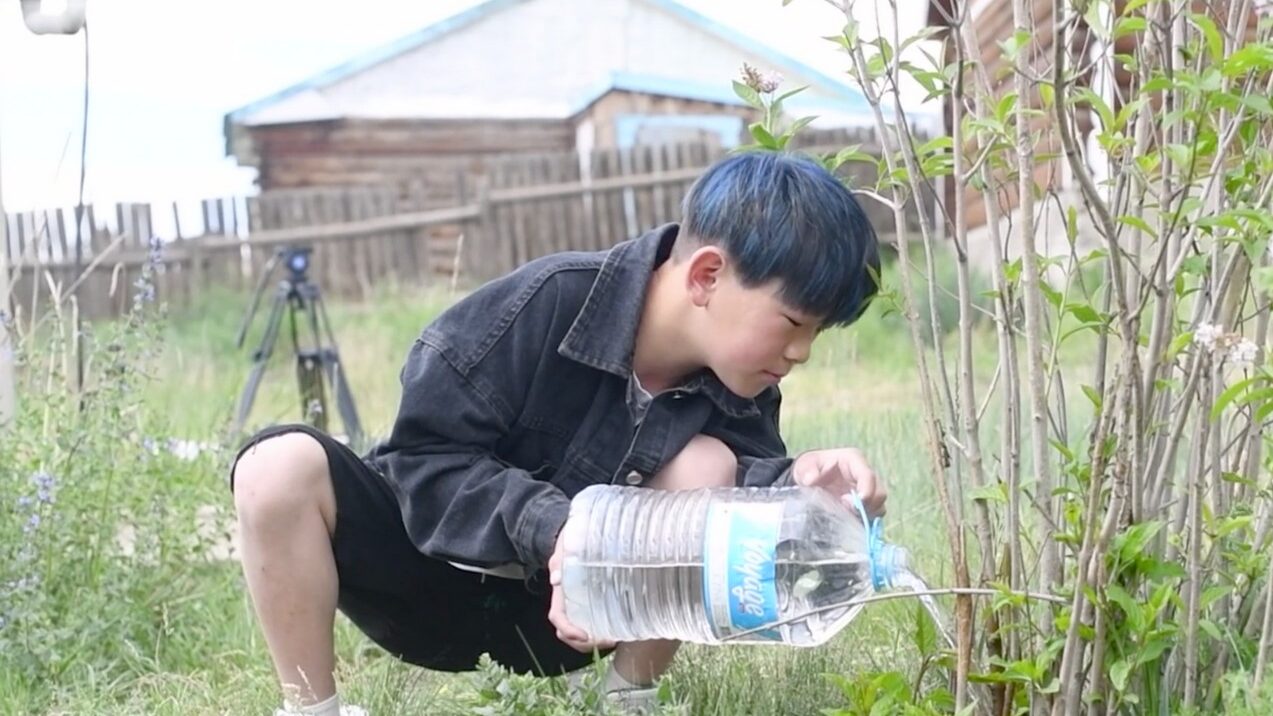Kherlen soum, Dornod province, Mongolia, Mongolia
In collaboration with

August 2024 – July 2025
A deep well and improved supply and sanitation facilities provide water and enable hygiene for the schoolchildren and nearby community members. Solar energy and new piping ensure efficiency during Mongolia’s harsh winters and facilitate irrigation for a school garden.
Objectives
- To improve access to water, sanitation, and hygiene with environmentally friendly and energy-efficient facilities in both school and community areas by constructing deep water wells powered by solar energy.
- To introduce healthy hygiene practices for school children.
Beneficiaries
1,463 direct
731 women and 1,378 children under 15.
Primary and secondary students and teachers from the schools.
750 indirect
150 women and 350 children under 15.
Community members who will access water from the schoolyard well.

On the ground
The facilities are severely deteriorated and unusable during the winter. There is a high incidence of diarrheal diseases among students, whose numbers double the school’s capacity.
Meeting minimum water, sanitation, and hygiene standards is a significant challenge for many rural schools in Mongolia. One major limitation is the absence of easily accessible water sources or a supply network, making implementing any improvement plan difficult. Even when a viable water source is near the schools, providing sustainable improvements at reasonable costs remains a challenge.
Mongolia’s harsh winters, with temperatures dropping as low as -50°C for extended periods, require that facilities be heated to prevent freezing. Without centralized heating systems, which are most common in rural schools, heating costs are high. In 80% (306) of rural schools, water-flushed toilets and sanitation facilities do not function because there is no water supply, and heating systems for shallow water pipes have proven inadequate, causing pipes to freeze and break.
In Dornod province, 37.1% of the population is classified as poor, living well below the standard of living. The province’s Department of Family, Child, and Youth Development (FCYD) has expanded its database of the most vulnerable children (MVC) to support them, such as food voucher services.
Khan-Uul Primary School has a very old building, constructed in 1963. The water and sanitation facilities are severely deteriorated, and the Dornod government has not allocated funds for their improvement.
Its capacity is 320 students, but it currently accommodates 700, exceeding its capacity by more than twice, with a high enrollment of herder and vulnerable children.
Waterborne diseases such as diarrhoea are frequent among students. In the 2022-2023 school year, 25 cases of diarrhoea were reported due to the school’s defective septic system. During the winter, accumulated wastewater in the septic tank froze.
There is no drinking water inside the school, so children only drink at lunchtime. There is also no hot water; only cold water comes out of the sink for handwashing. No proper facilities exist for the eight disabled children who study at the school.
The facilities for the 700 students consist of six toilet seats and six sinks, and they are not gender-separated. When students use the bathroom, a teacher must organize them in a line, wasting valuable class time.

In detail
This project innovates by using deep water wells (60-70 meters) with solar panels and a distribution system in the schoolyard. The goal is to make the water and sanitation facilities climate-resilient and provide irrigation for a greenhouse of nutritious vegetables to complement the school lunch program.
Additionally, community members can access high-quality water for their families. Solar energy keeps the well functioning properly (water pump and heating). The heating issue is addressed with an electric heater at night and on non-sunny days. Power outages are relatively common.
Therefore, the hybrid solar-electric system for deep water adapts better to the community’s and schools’ water sources. The region enjoys around 250 sunny days, offering great potential to use solar energy to reduce electricity or coal usage for heating.
During the implementation stage, the local government department provides support and may allocate some funds to the school if there is a shortage during the renovation. All government stakeholders collaborate. The school is responsible for managing and maintaining the deep-water well.
The project includes training on healthy hygiene practices for children.
The development process is as follows:
- Construction of a sewage system with graywater technology connected to the primary school.
- Preparation of technical documents required for the installation of toilets and sinks according to educational standards.
- School installations in compliance with educational standards.
- Installation of two water filtration units.
- Monitoring.
- Technical support project cost.

Prospects for sustainability
The sustainability of water, sanitation, and hygiene services critically depends on the availability of funds to cover regular expenses, maintenance, and occasional equipment repairs and septic tank unclogging. That is why we ensure adequate funds for these tasks are included in school budgets.
After project implementation, funds for major repairs are included in provincial rather than school budgets.
The school principal typically has overall responsibility for hygiene education activities. The project trains teachers, social workers, and school nurses and organizes hygiene education activities with them. Hygiene education classes and health clubs are then held.
Classes should be participatory, providing opportunities for students to practice good habits. Each beneficiary school has at least three teachers trained to carry out these activities. Hygiene education classes and demonstrations are linked to the implementation of physical improvements in water, sanitation, and hygiene, ensuring there are no obstacles to students following the good practices they’ve learned.

